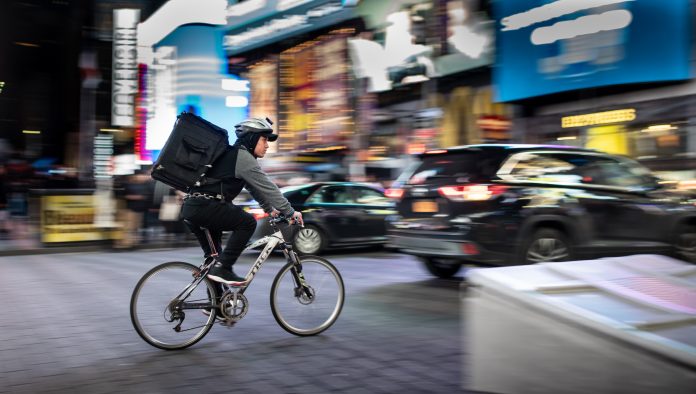Third-party delivery platforms frame their business as one of marketing. When restaurants still had dining rooms to fill, apps promoted their service as a way of reaching new customers. Now third-party platforms hold the restaurant market captive, and the apps are more crowded than ever.
- See how much you are losing on takeout: Calculate now
A lot of problems can arise when restaurants rely on third-party food ordering and delivery services.
Problem #1: Handling Orders Nightmare
Different third-party ordering systems have different ways of sending in orders. Some use email, others use bespoke tablets. This a huge headache for whoever is in charge of sifting through all of these orders and passing them onto the kitchen. It’s no wonder that even the best restaurants occasionally miss one and get hit with the penalty of a one-star review.
It’s not just a logistical problem. Staff in all areas of the business need to be trained to take orders in the front-of-house and properly store, handle and package food in the kitchen so that it has the best chance of arriving hot. This is easy when you’re in charge of the delivery, but when it’s a third-party that handles multiple orders at once, there’s no guarantee that your food will be delivered first.
For some restaurants that can even mean changing the way they package carryout food so that it can arrive at customers in the best condition, rather than a cold, soggy mess.
Problem #2: Huge Cost of Transaction Fees
The most obvious problem for restaurants is the huge cost that comes with these online orders. third-party websites charge restaurants fees of up to 30% for each order. This makes tight margins even tighter for small, independent restaurants.
It wouldn’t be so bad if orders included high margin items like alcohol or other drinks. But these items are rarely ordered in online deliveries leaving restaurants no room to make up the fees that apps charge.
Even worse, as these ordering websites grow in popularity, the number of dine-in customers may diminish. Why would customers bother going into restaurants when they can easily order online from home?
It will get worse according to the latest research. Analysts at Morgan Stanley predict that delivery could make up almost 40 percent of restaurant revenue by 2022.
Most of these online platforms aren’t profitable themselves, either. That means that restaurants that rely on these platforms to drive online traffic, even despite the high transaction costs, could be left in the cold if any of these platforms suddenly shut down.
Problem #3: Customers Don’t Engage With the Restaurant’s Brand
This isn’t the first issue that restaurant managers will bring up, but it’s a big one. When customers use an online ordering service, they become the customer of the app and not the restaurant. They pay the app, the app tells them when their food comes and a driver from the app delivers the food. The only time they interact with the restaurant’s brand is when they taste the food.
That means the customer is missing out on 90% of the restaurant’s experience. They don’t get to interact with restaurant staff, they never see any of the restaurant’s branding efforts and they certainly don’t set foot in the restaurant itself. When customers order through these websites it becomes impossible for restaurants to create an engaging and fulfilling customer experience.
It also becomes impossible for them to market to these customers in the future. When 3rd-party apps control the process, they don’t just take a cut of the profits, they also take all of the customer’s data. The restaurant doesn’t get an email address or phone number (in some cases) of the customer that they can use to market to in the future. All they get is an order.
Small independent restaurants have a hard enough job marketing to customers as it is without missing out on marketing to a significant portion of their customers.
Problem #4: The Reputation Problem
Not only to restaurants get the raw end of the stick when it comes to the branding, they also get blamed for any negative part of the customer experience, too.
Because when something goes wrong with the order, whether the food is cold, the order is wrong or the delivery is late, guess who gets blamed?
That’s right. It’s the restaurant.
According to the Off-Premise Insights’ Takeout, Delivery and Catering study, 82 percent of customers blame the restaurant and not the driver or the ordering app.
Not only do restaurants have to field the complaints, they also get backlash on social media, too. Research has shown that reviews including the word delivery are worth less than two stars on average. This is even true when the remaining reviews are overwhelmingly positive.
For small, local restaurants, a handful of negative reviews can be enough to have a measurable impact on their bottom line. And it can take months of positive four- and five-star reviews before they recover their reputation.
We found a calculator to help you calculate how much you are losing out on takeout: Calculate now
Reference:
https://applova.io/third-party-delivery-commissions-calculator




